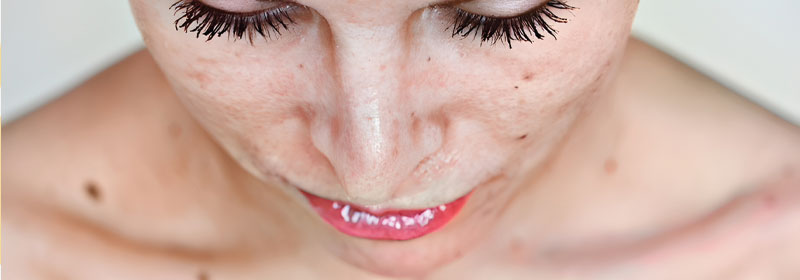What To Do With MELASMA And FRECKLES?
My best friend and I have had freckles since I can remember, but we always related to them really differently. She always hated hers and I always loved mine. Summer is my favorite season and would bring out my freckles relatively quickly when sunbathing, giving my skin a sun-kissed glow. My feelings about the pigmentation of my skin have changed unfortunately in the past 2 years. The simple reason being that they only showed on my nose and some on my cheeks before, which I found sexy, but 2 years ago the freckles started to show above my upper lip too. Now this is unfortunate as by time passing their number increased, leaving me with darker patches around my upper lip, which from a distance started to look like I had a funky little mustache. Now, I believe all of you will agree with me that no mustache ever looks good on a woman, except maybe if you are Frida Kahlo. The worst was that the freckles didn’t disappear after the summer like most of my other freckles. I started to use highlighters to hide it, but it was bothering me more and more. I asked my beautician what they were and why they appeared, she said it was most likely due to hormonal changes, and that many women start suffering from them in their 30s. She suggested Micro Dermabrasion as a treatment, which I tried. Although I liked how the treatment affected my skin, when it came to the pigmentation unfortunately the results were minor and not long-lasting, so I started to do my research about the topic to have a better understanding.
I found out the phenomenon is called melasma, which is a pigmentary disorder that is characterized by poorly defined, dark brown spots on sun exposed areas, such as the face, back, and arms. This hyperpigmentation condition affects millions of people worldwide, especially among Hispanic, African, and Asian populations. Melasma is considered one of the most stubborn and resistant pigmentary conditions. The formation of melasma can be caused by several things such as hormones, exposure to UV light, and/or genetics. Birth control pills, pregnancy, and hormone therapy can all trigger melasma. Because of the over production of melanin, patches appear, that are darker than your normal skin colour. This condition doesn’t do any physical harm, but you may feel self-conscious about the way it looks. Depending on the depth of the melanin in the skin, melasma can fall into 3 different categories: epidermal, dermal, or mixed. This can be easily tested by a doctor by using a Wood’s lamp that shows how many layers of the skin are affected. Treatment regimens such as dermabrasion, topical creams, and chemical peels have shown limited results.
However, laser therapy has been shown to be very effective in treating melasma when using the correct parameters. The objective of laser treatment is to deliver the appropriate wavelength of laser energy in a sufficiently short pulse, such that the wavelength is highly absorbed by a specific target, while damage to surrounding tissues is minimized. I found that the highly advanced ND-Yag laser gives the most outstanding results, so I decided to find a clinic and ask for a consultation. The treatment went smoothly the doctor used a local anesthetic cream, I felt no discomfort at all. The results were great, I had 3 treatments which vanished the annoying little patches entirely. And it did more!! It also made my skin more radiant and firmer and helped to get rid of those fine lines that started to show. I’m very happy indeed and feeling more confident.



